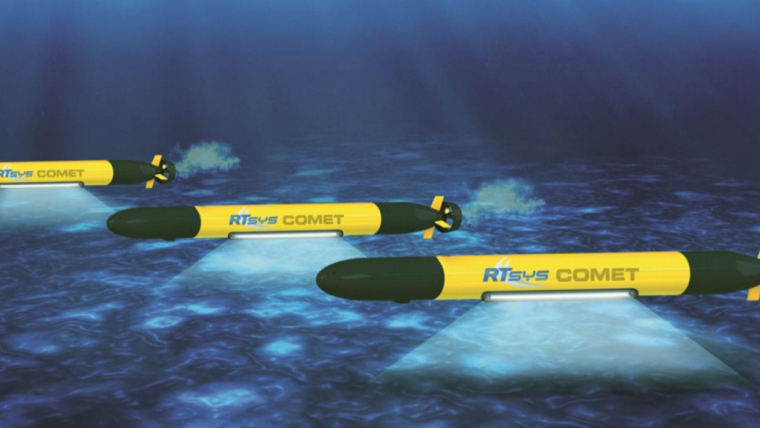AUVs Communicate to Move around in Swarms
RTsys autonomous underwater vehicles (AUVs) have been developed to move around in swarms. Their small size, speed and ability to coordinate means that they are a unique tool for both civil and military applications. A ‘master’ drone, with a reliable navigation system, can be used to guide other drones and is therefore capable of maintaining a precise position without using a heavy and expensive inertial navigation system.
The AUVs, developed by RTsys, are characterised by their size, speed and battery life up to 10 hours.
Canvas Large Areas
The master drone's communication system can also be used to communicate with vessels or surface buoys, sometimes from a distance of up to 5km. Given that the drones communicate using acoustic waves and are equipped with telemetry systems in real time, they can be located and communicate with one another at distances of up to 1.5km. This swarm of coordinated drones enables a network to be created across a seabed observation area.
The size of the drones (weighing between 28 and 33kg, and measuring 1.77m in length) makes them easy to deploy, by one person if necessary, from a small boat, a pontoon or beach. They can reach depths of 250m at a maximum speed of 10 knots (almost 20km/h).
RTsys AUVs already play a central role in the MELODI research project, which aims to locate sulphide deposits using swarms of AUVs equipped with magnetometers. Numerous other uses are also envisaged for these devices, which are amongst the lightest and quickest on the market.














